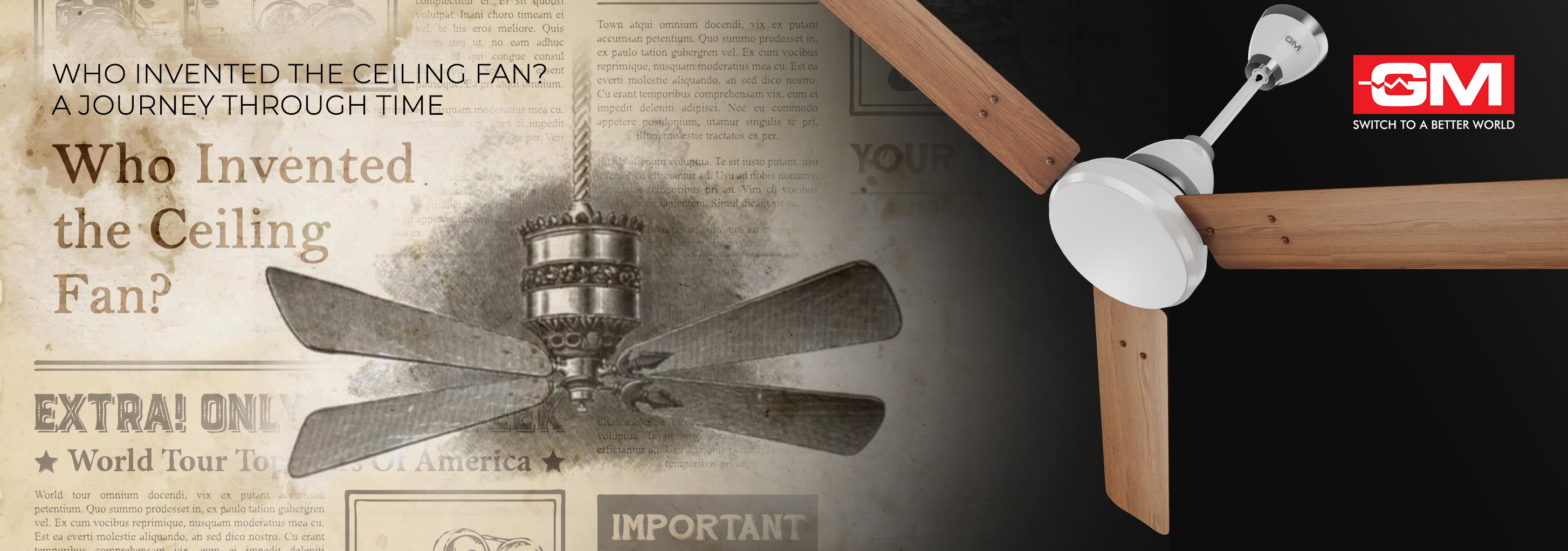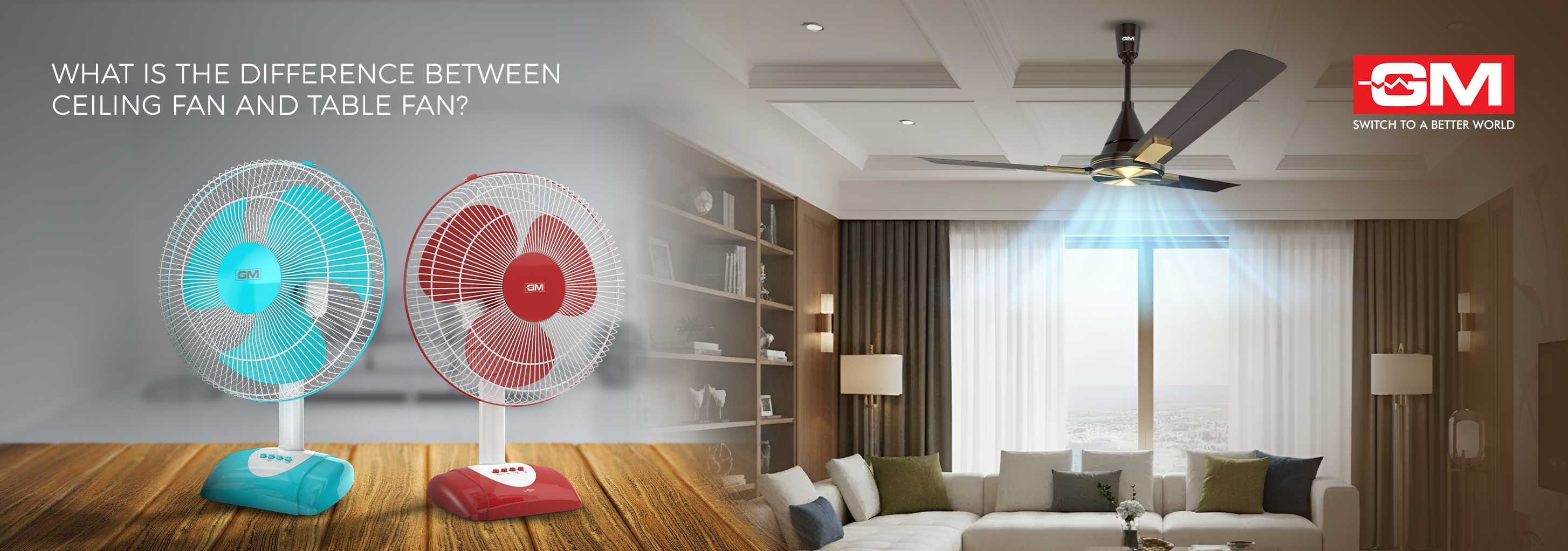Blog
9 Common Ceiling Fan Problems & Tips to Fix Them
Updated on Apr 2025

Ceiling fans are indispensable additions in many homes, offering both aesthetic appeal and functionality with their air circulation. However, they can sometimes encounter problems that may affect their performance. Understanding these issues and knowing how to address them can save you time and money on repairs. Here, we explore nine common ceiling fan problems and provide practical solutions to keep your fans running smoothly.
1. Ceiling Fan Stopped Working Suddenly
The sudden failure of a ceiling fan is often due to a tripped circuit breaker or a blown fuse. First, check your home's electrical panel to see if the breaker has tripped or if the fuse has blown; replace it if necessary. If the fan still does not work, examine the wall switch and remote control batteries, as these can also be sources of the ceiling fan problems and solutions can be found accordingly.
2. Wobbling Fan
A wobbling ceiling fan can be unnerving and dangerous. Thinking of ceiling fan troubleshooting? We have the solution. This issue is typically caused by loose screws on the fan blades or motor. Tighten all screws and ensure that the fan blades are evenly spaced and securely fastened. If the wobble persists, a balancing kit may be required to properly align the blades.
3. Ceiling Fan Makes Noise
Noisy operation is a common complaint and can be due to several factors, including loose screws or unbalanced blades. Tighten all connections and check for any bent blade holders that might be causing the fan to emit noise. If the fan continues to hum or rattle, lubricating the motor with light machine oil can help you reduce the noise.
4. Ceiling Fan Bearing Noise
Bearing noise often manifests as a grinding or squealing sound, indicating that the fan's bearings may be worn out or require lubrication. If lubrication does not resolve the issue, the bearings might need to be replaced by a professional.
5. Ceiling Fan Heating Problem
If your ceiling fan motor becomes unusually hot, it could be due to running the fan on high speed for extended periods. Ensure there is adequate clearance around the fan for proper air circulation. Overheating may also be a sign of internal electrical issues, such as faulty wiring, necessitating professional inspection.
6. Ceiling Fan Slow Speed Problem
A ceiling fan operating slower than normal can be frustrating. This often results from a faulty capacitor, which needs replacing. Dust accumulation in the motor can also impede fan speed, so it should be cleaned regularly to ensure optimal performance.
7. Fan Does Not Rotate at Full Speed
Besides a bad capacitor, if your ceiling fan does not rotate at full speed, check for incorrect settings on remote control or issues with the speed control switch. Sometimes, simple adjustments or replacing the speed control can solve the problem.
8. Unsteady Ceiling Fan
An unsteady fan not only reduces efficiency but also poses safety risks. Check if the fan is correctly mounted to the ceiling and that the mounting bracket is securely attached. For persistent wobbling, use a fan balancing kit to stabilise the unit.
9. Non-Functional Fan Lighting
For ceiling fans equipped with lights, non-functionality can typically be traced back to burnt-out bulbs or loose wiring. Ensure all connections are secure and replace any faulty bulbs. If the issue is not resolved, the light kit may need to be replaced or repaired.
Additional Tips to Maintain Your Ceiling Fan:
- Regular Maintenance: Clean your fan blades and motor housing regularly to prevent dust build-up that can lead to several of the issues mentioned above.
- Professional Help: For electrical problems or when in doubt, consult a qualified electrician to avoid further damage to your fan or potential hazards.
- Quality Products: Invest in high-quality ceiling fans such as those from GM Modular to reduce the likelihood of frequent malfunctions.
By familiarising yourself with these common problems and solutions, you can ensure that your ceiling fans continue to enhance the comfort and beauty of your home effectively. Remember, routine maintenance is key to prolonging the life and functionality of your ceiling fans.
Need help finding the perfect ceiling fan for your space? Check out our Guide on Choosing the Right Ceiling Fan for expert tips and advice.
Related Blogs

Who Invented the Ceiling Fan? A Journey Through Time
Ceiling fans are a quiet yet transformative part of life at home, offering comfort, style, and energy savings all year round. But not many of us know about the invention of the ceiling fan and how this humble device revolutionised modern living. To a
Read More
What is the Difference Between a Ceiling Fan and a Table Fan?
Fans are easy to use and save energy, so most people use them to keep a room cool and comfortable. But before you buy one, you should know what makes a ceiling fan different from a table fan. They both move air, but they do it in very different ways
Read More
Types of Doorbells Explained: Wired, Wireless, Smart, and More
A doorbell is one of the most important parts of a home or office, but it's also one of the most common things that people forget about. It not only lets visitors know you're home, but it also makes your space more convenient, safe, and stylish. The
Read More
How to Use a Steam Iron Safely and Effectively?
No matter if you're going to work, a meeting, or a party, wearing a crisp, wrinkle-free outfit can boost your confidence right away. But you need to know how to use a steam iron correctly to get that perfect finish. A steam iron isn't just another ap
Read More